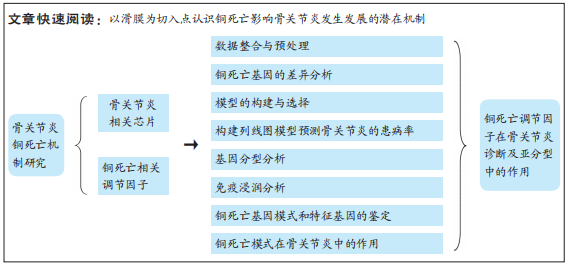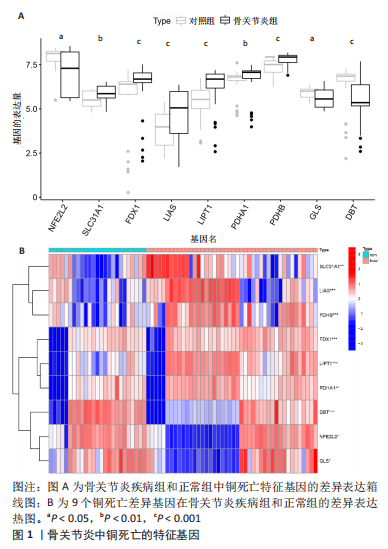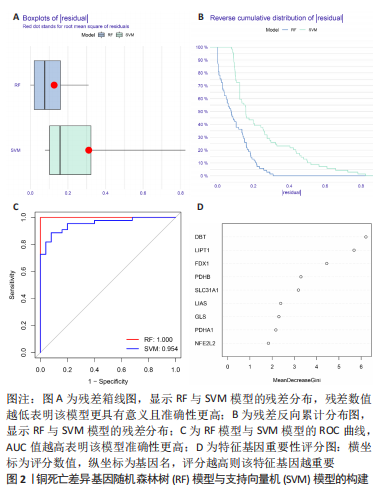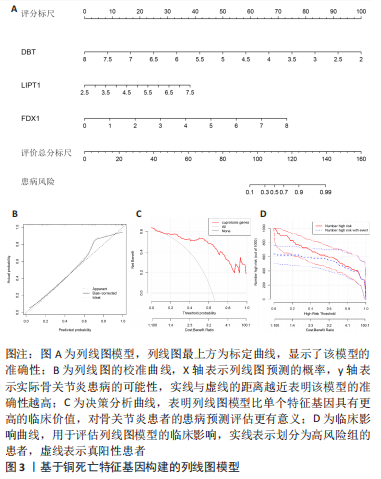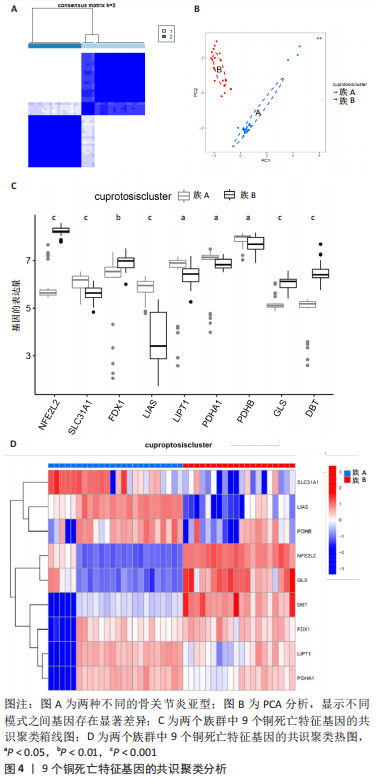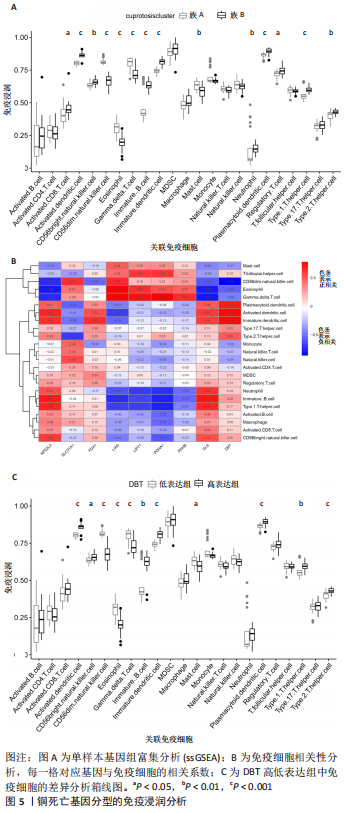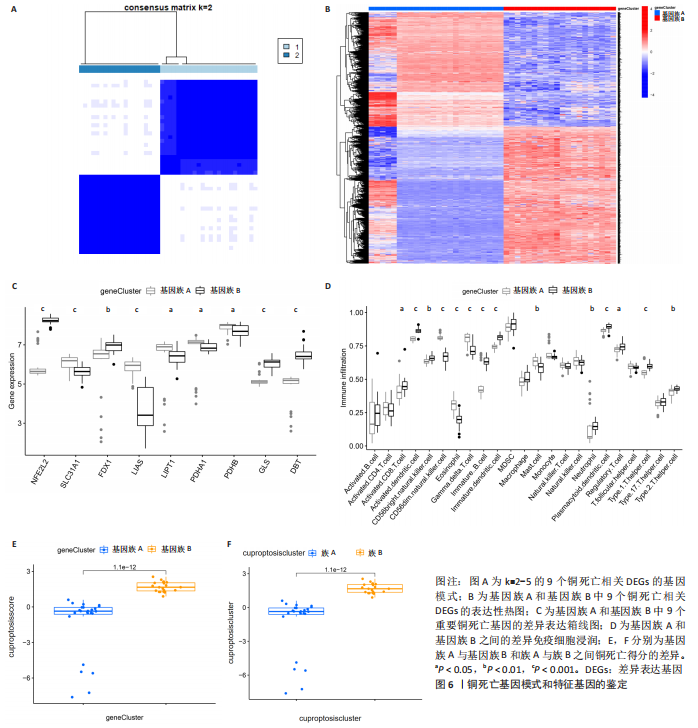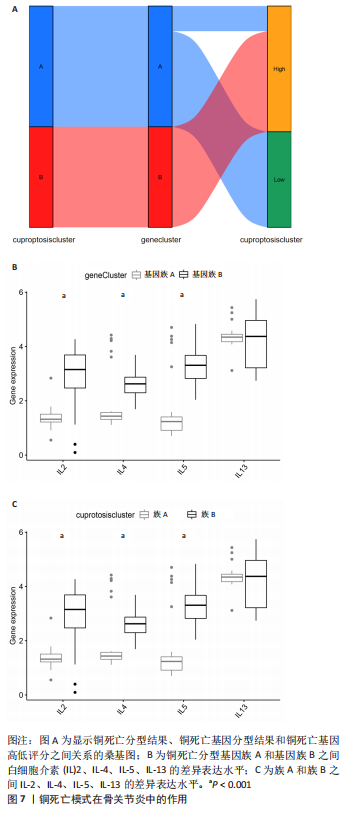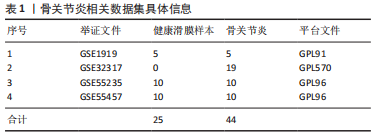[1] CHEN H, CHEN L. An integrated analysis of the competing endogenous RNA network and co-expression network revealed seven hub long non-coding RNAs in osteoarthritis. Bone Joint Res. 2020;9(3):90-98.
[2] FRANK M, BWEMERO J, KALUNGA D, et al. OA60 Public health and palliative care mix; a ccpmedicine approach to reverse the overgrowing burden of non-communicable diseases in tanzania. BMJ Support Palliat Care. 2015;5 Suppl 1:A19.
[3] 钱晓芬, 曾平, 刘金富, 等. 差异表达基因联合加权共表达网络分析筛选骨关节炎滑膜中的关键基因[J]. 中国组织工程研究,2022, 26(33):5342-5349.
[4] SCANZELLO CR, GOLDRING SR. The role of synovitis in osteoarthritis pathogenesis. Bone. 2012;51(2):249-257.
[5] HUANG YZ, XIE HQ, SILINI A, et al. Mesenchymal Stem/Progenitor Cells Derived from Articular Cartilage, Synovial Membrane and Synovial Fluid for Cartilage Regeneration: Current Status and Future Perspectives. Stem Cell Rev Rep. 2017;13(5):575-586.
[6] PRIETO-POTIN I, LARGO R, ROMAN-BLAS JA, et al. Characterization of multinucleated giant cells in synovium and subchondral bone in knee osteoarthritis and rheumatoid arthritis. BMC Musculoskelet Disord. 2015; 16:226.
[7] HAN D, FANG Y, TAN X, et al. The emerging role of fibroblast-like synoviocytes-mediated synovitis in osteoarthritis: An update. J Cell Mol Med. 2020;24(17):9518-9532.
[8] TSVETKOV P, COY S, PETROVA B, et al. Copper induces cell death by targeting lipoylated TCA cycle proteins. Science. 2022;375(6586): 1254-1261.
[9] OLIVERI V. Selective Targeting of Cancer Cells by Copper Ionophores: An Overview. Front Mol Biosci. 2022;9:841814.
[10] LIGHTBODY G, HABERLAND V, BROWNE F, et al. Review of applications of high-throughput sequencing in personalized medicine: barriers and facilitators of future progress in research and clinical application. Brief Bioinform. 2019;20(5):1795-1811.
[11] ZHONG Y, XU F, WU J, et al. Application of Next Generation Sequencing in Laboratory Medicine. Ann Lab Med. 2021;41(1):25-43.
[12] PAPPADA SM. Machine learning in medicine: It has arrived, let’s embrace it. J Card Surg. 2021;36(11):4121-4124.
[13] JAMIN A, ABRAHAM P, HUMEAU-HEURTIER A. Machine learning for predictive data analytics in medicine: A review illustrated by cardiovascular and nuclear medicine examples. Clin Physiol Funct Imaging. 2021;41(2):113-127.
[14] QUER G, ARNAOUT R, HENNE M, et al. Machine Learning and the Future of Cardiovascular Care: JACC State-of-the-Art Review. J Am Coll Cardiol. 2021;77(3):300-313.
[15] Kokol P, Jurman J, Bogovic T, et al. Supporting Real World Decision Making in Coronary Diseases Using Machine Learning. Inquiry. 2021;58: 46958021997338.
[16] 于安池. 基于改进随机森林算法的乳腺癌预测研究[D]. 鞍山:辽宁科技大学,2021.
[17] 李琳. 基于优化随机森林混合模型的病症预测分析[D]. 郑州:华北水利水电大学,2022.
[18] 汤胜男, 辛学刚. 机器学习在生物信息学领域的应用与研究进展[J]. 人工智能,2020(1):84-93.
[19] WANG L, WEI S, ZHOU B, et al. A nomogram model to predict the venous thromboembolism risk after surgery in patients with gynecological tumors. Thromb Res. 2021;202:52-58.
[20] TSVETKOV P, COY S, PETROVA B, et al. Copper induces cell death by targeting lipoylated TCA cycle proteins. Science. 2022;375(6586):1254-1261.
[21] Kaminska JA. A random forest partition model for predicting NO2 concentrations from traffic flow and meteorological conditions. Sci Total Environ. 2019;651(Pt 1):475-483.
[22] Huang S, Cai N, Pacheco PP, et al. Applications of Support Vector Machine (SVM) Learning in Cancer Genomics. Cancer Genomics Proteomics. 2018;15(1):41-51.
[23] ZHANG Y, LIU N, WANG S. A differential privacy protecting K-means clustering algorithm based on contour coefficients. PLoS One. 2018; 13(11):e206832.
[24] AHN SH, YANG HY, TRAN GB, et al. Interaction of peroxiredoxin V with dihydrolipoamide branched chain transacylase E2 (DBT) in mouse kidney under hypoxia. Proteome Sci. 2015;13:4.
[25] ABDUL SZ, CERO C, PIERCE AE, et al. Combining a beta3 adrenergic receptor agonist with alpha-lipoic acid reduces inflammation in male mice with diet-induced obesity. Obesity (Silver Spring). 2022;30(1): 153-164.
[26] MAYR JA, FEICHTINGER RG, TORT F, et al. Lipoic acid biosynthesis defects. J Inherit Metab Dis. 2014;37(4):553-563.
[27] FROMMER KW, HASSELI R, SCHAFFLER A, et al. Free Fatty Acids in Bone Pathophysiology of Rheumatic Diseases. Front Immunol. 2019;10:2757.
[28] STRUSHKEVICH N, MACKENZIE F, CHERKESOVA T, et al. Structural basis for pregnenolone biosynthesis by the mitochondrial monooxygenase system. Proc Natl Acad Sci U S A. 2011;108(25):10139-10143.
[29] ZHANG Z, MA Y, GUO X, et al. FDX1 can Impact the Prognosis and Mediate the Metabolism of Lung Adenocarcinoma. Front Pharmacol. 2021;12:749134.
[30] BELLUZZI E, STOCCO E, POZZUOLI A, et al. Contribution of Infrapatellar Fat Pad and Synovial Membrane to Knee Osteoarthritis Pain. Biomed Res Int. 2019;2019:6390182.
[31] 陈龑, 薛艳, 蒋鼎, 等. T淋巴细胞在骨关节炎中作用的研究进展[J]. 医学综述,2021,27(5):833-838.
[32] 叶小康, 白自然, 金敏丽, 等. 滑膜细胞在骨关节炎中的研究进展[J]. 生物化学与生物物理进展,2021,48(11):1282-1289.
[33] ZHANG Y, ZHANG Y, GU W, et al. Th1/Th2 cell’s function in immune system. Adv Exp Med Biol. 2014;841:45-65.
[34] MONASTERIO G, CASTILLO F, ROJAS L, et al. Th1/Th17/Th22 immune response and their association with joint pain, imagenological bone loss, RANKL expression and osteoclast activity in temporomandibular joint osteoarthritis: A preliminary report. J Oral Rehabil. 2018;45(8): 589-597.
[35] WANG J, JIANG H, QIU Y, et al. Effector memory regulatory T cells were most effective at suppressing RANKL but their frequency was downregulated in tibial fracture patients with delayed union. Immunol Lett. 2019;209:21-27.
[36] NACHER-JUAN J, TERENCIO MC, ALCARAZ MJ, et al. Osteostatin Inhibits Collagen-Induced Arthritis by Regulation of Immune Activation, Pro-Inflammatory Cytokines, and Osteoclastogenesis. Int J Mol Sci. 2019;20(16): 3845.
[37] CASTROGIOVANNI P, DI ROSA M, RAVALLI S, et al. Moderate Physical Activity as a Prevention Method for Knee Osteoarthritis and the Role of Synoviocytes as Biological Key. Int J Mol Sci. 2019;20(3):511.
[38] ROSSHIRT N, HAGMANN S, TRIPEL E, et al. A predominant Th1 polarization is present in synovial fluid of end-stage osteoarthritic knee joints: analysis of peripheral blood, synovial fluid and synovial membrane. Clin Exp Immunol. 2019;195(3):395-406.
[39] HE Z, LEONG DJ, XU L, et al. CITED2 mediates the cross-talk between mechanical loading and IL-4 to promote chondroprotection. Ann N Y Acad Sci. 2019;1442(1):128-137.
[40] CHEN K, KOLLS JK. T cell-mediated host immune defenses in the lung. Annu Rev Immunol. 2013;31:605-633.
[41] RAPHAEL I, NALAWADE S, EAGAR TN, et al. T cell subsets and their signature cytokines in autoimmune and inflammatory diseases. Cytokine. 2015;74(1):5-17.
[42] ALAHDAL M, ZHANG H, HUANG R, et al. Potential efficacy of dendritic cell immunomodulation in the treatment of osteoarthritis. Rheumatology (Oxford). 2021;60(2):507-517.
[43] KULKARNI P, MARTSON A, VIDYA R, et al. Pathophysiological landscape of osteoarthritis. Adv Clin Chem. 2021;100:37-90.
|
